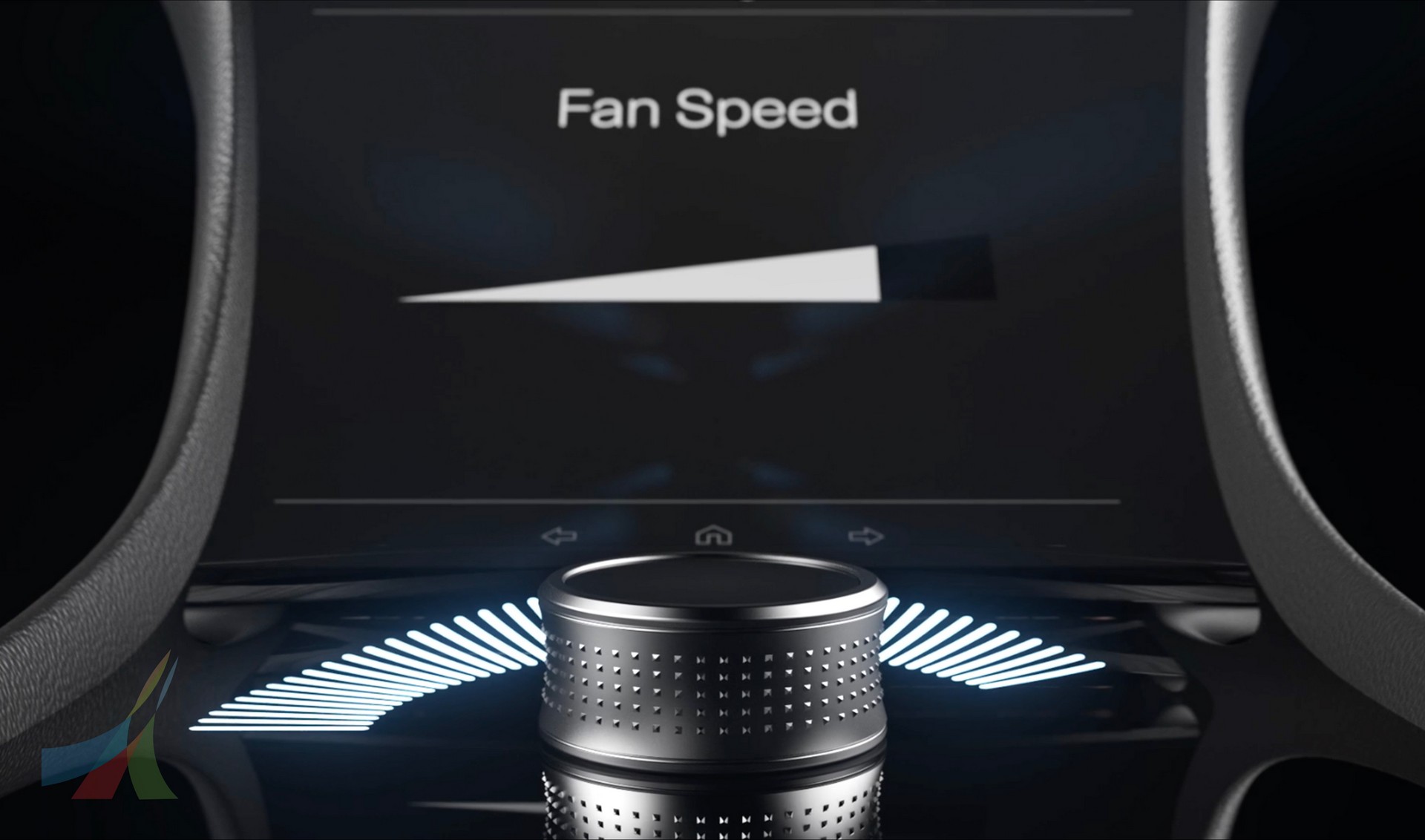CES was short on vehicle introductions this year, but that didn’t stop a number of companies from using the event to showcase new automotive technologies.
This time we’re looking at interior tech, but not the digital instrument clusters and infotainment systems you’re used to seeing. Instead, let’s examine some more mundane features that have been reimagined for the future.
Kicking things off is GHSP’s dual stack rotary controller, which combines a rotary shifter with an infotainment controller. It’s designed to be intuitive, minimalistic and empowering as it will enable drivers to “control their entire car with one multifunction controller.”
Also Read: Panasonic Unveils AI-Enhanced Augmented Reality HUD
As you can see in the promo video, the controller resides on the center console and a second tier raises when the vehicle is started. The upper tier acts as a rotary shifter, while the lower tier is an infotainment controller with a push ring that can be used to make selections.
The features don’t end there as the upper tier has a fingerprint reader which effectively logs you into the car. Once a user has been recognized, their preferences are loaded and this could include everything from their favorite radio stations to mirror and seat settings.
While the stacked setup seems slightly confusing, each tier has a different outer texture which makes them easy to distinguish from one another, even without looking. The controls are also adjustable as drivers can change their feel and sensitivity.
Panasonic Moving Coil Wireless Charger
Wireless charging technology is becoming more common and even Apple’s entry-level iPhone SE supports it. As a result, automakers are introducing wireless chargers on an increasing number of vehicles.
While wireless chargers are nothing new, Panasonic Automotive introduced an interesting moving coil variant. It allows you to toss your smartphone into the tray as its charging coil moves to locate the “optimum position to align with the mobile device’s charging coil.”
Once the coils have been aligned, the smartphone starts charging at up to 15 watts. The company notes this is “one of the highest rates of charge in the industry for a wireless charging system” and it means your phone should have plenty of juice once you arrive at your destination.







